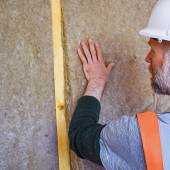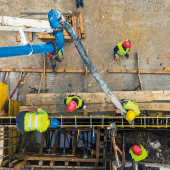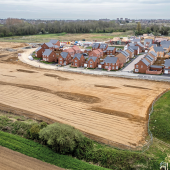Do the right thing
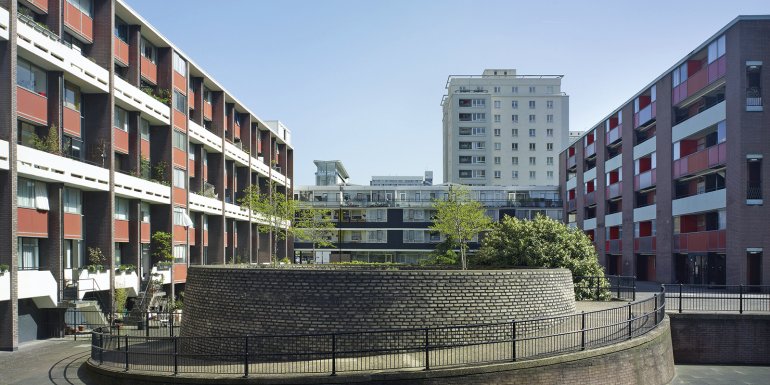
A recent National House Building Council report has been compiled by asking social housing developers about their hopes and challenges. Peter Crush asks what the future of social housing holds.
In the context of a cost-of-living crisis, where rent inflation has reached 10.4% and many now pay 35-40% of their income on rent, the very phrase ‘affordable housing’ can often sound like a misnomer. Around 15% now find it very difficult to meet their monthly rental fees and the proportion of people falling behind on their payments has doubled in the past six months.
The safety net, of course, has long been social housing. However, according to the Department for Levelling Up, Housing and Communities’ own data, low levels of social housing building – where some 40 English local authorities have neither built nor bought social rent units for the past five years (either through councils or housing associations) – has pushed an already pressed social housing sector to near breaking point. Already 4.2 million people need a home. But as the Home Connections report The demand for social housing before and during Covid-19 for the Policy Institute at King’s College London found, demand for social housing is now “surging”. Some 5% of the 26,000 properties analysed saw 500 applications or more, and it arguably supports Local Government Association assessments that council housing waiting lists are likely to double in the next few years.
Analysis of some of these issues saw the National House Building Council (NHBC) recently publish its Built on Insight report, in which it reiterated social housing’s presence as “a cornerstone of British society”. Despite acknowledging the “challenging environment” right now, Charlie Ash, the NHBC’s Sector Lead, concluded that contributors to the report had an “optimistic outlook, albeit tempered with healthy realism”. She added that modern methods of construction are now being given “serious thought,” with decarbonisation being “enthusiastically embraced”.
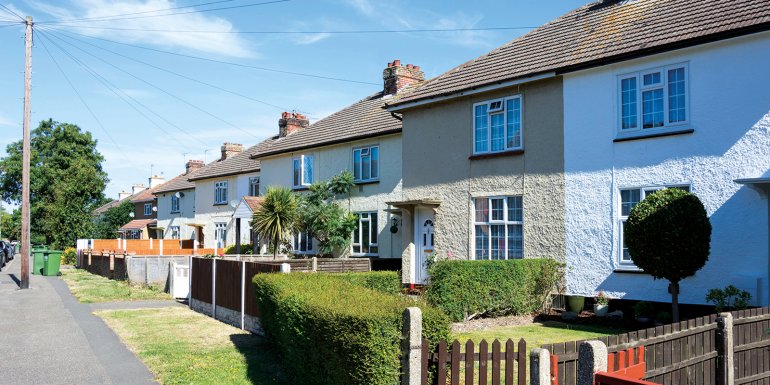
Accurate assessments?
Strikingly, contributors all agree social housing – despite the pressures it faces – is relevant and still needed (perhaps more than ever). It acts as a “naturally good way of attracting people from different backgrounds,” says Nicola O’Rourke, Associate Director at Abri.
There is consensus too that the “supply of affordable housing needs to be accelerated,” says Anette Simpson, Director at Legal & General Affordable Homes (L&G), but that progress is being hampered by funding gaps and planning issues.
As Shamez Alibhai, Head of Community Housing at Man GPM, proudly declares: “The social outcomes we engineer can change the lives of whole communities.”
Despite there being nods to social housing “being increasingly in the spotlight,” and the cost-of-living crisis making it harder for households to find affordable housing, the picture contributors paint is still upbeat (one even notes that the “amazing work” of the social housing sector has been “somewhat overlooked”). And despite well-publicised stories about the state of existing social housing, most want to declare impressive-sounding projects: 8,000 new homes over 30-40 years by Clarion Housing Association; 4,000 homes in a single year by L&G; more environmentally-friendly homes, such as those that produce 82% less carbon than traditional homes; and efforts to decarbonise existing stock.
To those in the know, of course, these build numbers are a drop in the ocean compared to what’s actually needed. Some contributors even say they would rather build fewer, better-quality homes if that means standards improve.
Helen Moore, Group Director at Orbit Homes, arguably speaks with the least gloss, coming closest to addressing the Pushmi-Pullyu conundrum of building new homes versus improving existing ones. “There’s always a challenge around where to prioritise spending,” she says. “You want to build considerably more homes, but you have a significant responsibility to those living in your existing homes too. It’s a bit like moving the deckchairs around on the Titanic.”
A decent place to call home
Contributors concur that their responsibilities towards residents have shifted and that building is not all about stacking homes high, but about developing spaces that create social cohesion and a sense of peace and belonging. Vicky Savage, Group Director of Development and Sales at L&Q Group, argues people’s “health and happiness depend on where they live” so there is a responsibility not to “take a risk with experimental housing schemes”. That notwithstanding, commentators agree that by taking a “commercial mindset with a socially responsible viewpoint”, better attention can be given to “creating attractive and safe places”.
Moore adds: “When you create a lovely space, people tend to respect it, enjoy living there, put down roots and build a better, stronger community.”
“Quality homes and neighbourhoods is something we won’t compromise on,” says Philip Jenkins, Peabody’s Executive Director of Development.
Jon Cook, CEO of Developments at Places for People, explained how he commissioned a 10,000-person survey specifically to build “more of what people wanted and less of what they didn’t”. What they wanted were buildings with better light and storage, and spaces that provide more flexibility.
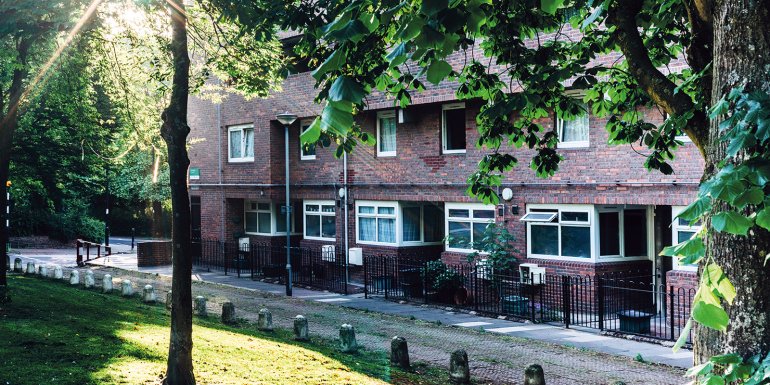
“The pandemic, coupled with the climate emergency, could be considered the inflexion point of residential design,” says Jim Dyer, Sovereign Housing Association’s Director for Built Environment.
Sovereign has recently created an asset management, investment and development strategy underpinned by a Homes and Place standard. Co-created with customers, Homes and Place is a qualitative and science-based design and energy performance guide.
Others, such as Torus, now have tenant panels. These strive – according to Anna James, its Group Head of Development – to “put listening to our customers at the heart of our work” and to “design homes with residents in mind”. With housing associations co-creating homes and taking account of feedback directly from residents themselves, they are all aiming to vastly improve the sense of service provision they give to residents.
For a long time, this has been lacking. It was partly in response to this lack of progress that the Social Housing (Regulation) Act (July 2023) was introduced. This requires, among other things, that all social housing managers have a professional qualification; that “tenants get the safe, warm and decent homes they deserve”; and that Awaab’s Law – a clause named after two-year-old Awaab Ishak, who died from prolonged exposure to mould in a Rochdale Boroughwide Housing flat – is enacted. This now requires social landlords to respond to and investigate repairs within specific timeframes. Additional powers will sit with the Regulator of Social Housing, and its CEO Fiona MacGregor has already indicated that her first task will be to consult on new consumer standards landlords will need to meet.
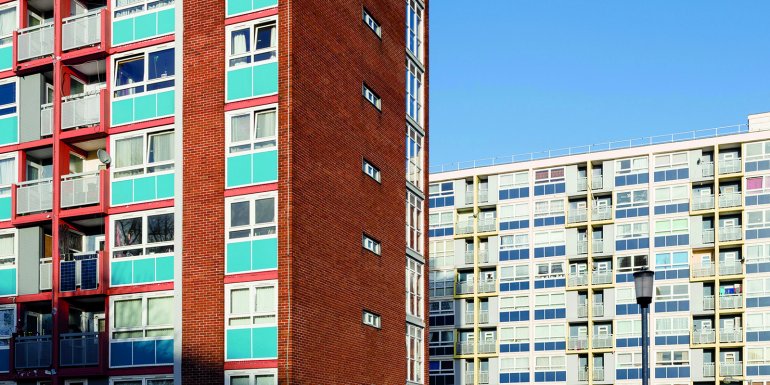
Future-proofing
Another area contributors also clearly want to address is the future-proofing of their homes, especially in response to the climate crisis. But while there is a willingness to develop their own solutions, there is also clear demand for more government direction – especially around the practicalities of using certain materials and their costs. In fact, many suggest the business models of social housing providers will need to change to accommodate pathways to net zero.
To do this, Moore and others talk about the need to consider joint ventures: “Many housing associations don’t have development expertise within the organisation, for example, and can gain this by joining another.”
Nick Worboys, Director at Longhurst Group, says: “I think we’re going to see more players enter the arena in the coming years outside the current model.”
Russell Baldwinson is Executive Director for Development at LiveWest, which says it has actually had to reduce the number of affordable homes it can build. He predicts more social housing providers will merge to ensure providers can sustain “doing more with less”.
Many argue one path to understanding social housing better in the future is by improving diversity in the house-building sector. “Our industry is male dominated – why is this?” asks L&Q’s Savage. She points out that development is about negotiation and that both sexes are “great negotiators and understand the practicalities of places and homes”.
While social housing does typically attract more people from different backgrounds, with diversity being broadly better than the wider construction sector, O’Rourke agrees that “there’s always room for improvement”. Abri is particularly invested in taking on apprentices.
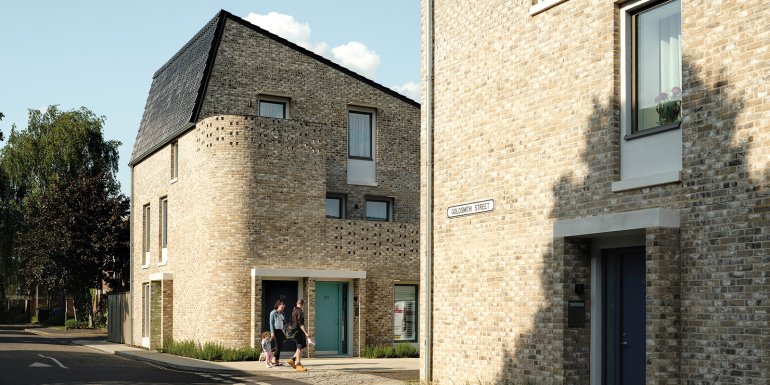
Worboys adds: “The skills shortage also affects the ongoing maintenance and repair of existing stock, which I don’t think is talked about as much as the development of new homes.” So, as demand intensifies, is the future for social housing, social housing building and net-zero social housing building really in safe hands? The short answer from contributors is yes, but with appeals for further help. “Housing associations have evolved and become more commercially astute over the past decade or so,” says LiveWest’s Baldwinson. “But, given the ongoing challenges we are facing, I believe there does need to be some level of government intervention to support the continued delivery of new affordable housing.” He says higher costs, higher borrowing costs (up to two-and-a-half times higher than the beginning of 2021) and tough maintenance schedules have impacted associations’ ability to develop “new affordable housing at previous business plan levels”.
As many contend, while the social housing model may be partially broken, there is great confidence it can still be fixed. Peabody’s Jenkins says: “Housing associations have grown in ambition and want to shape the places they create. To operate as true land-led developers, a different skillset to negotiate and manage is needed.”
Moore concludes: “Affordable [homes] don’t need to feel cheap or mean, or compromise on standards or aesthetic. It’s about consistently doing the right thing for your customers, as everyone deserves a safe, warm, decent place to call home.”
Read the report at bit.ly/NHBC_industryinsights



